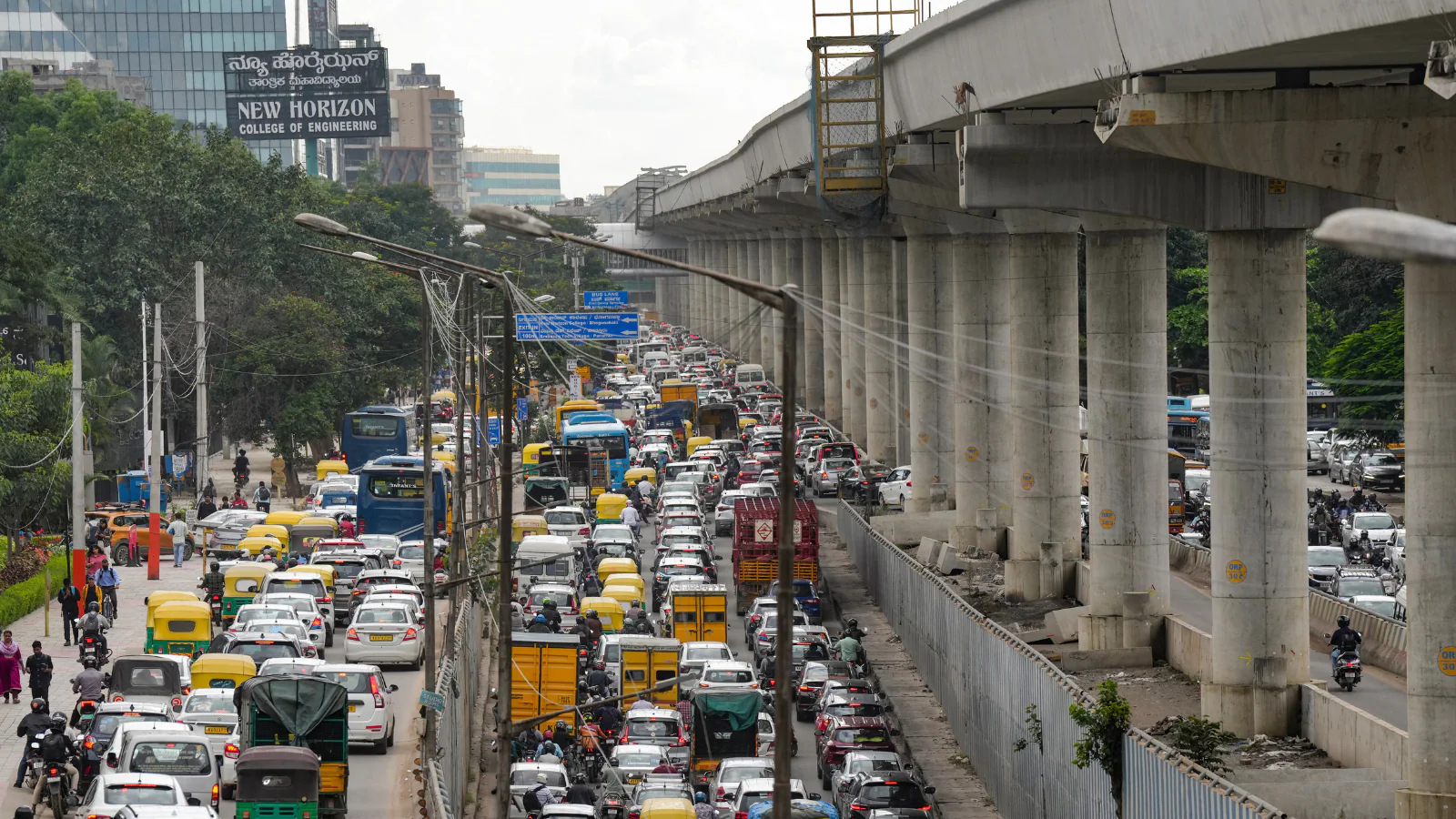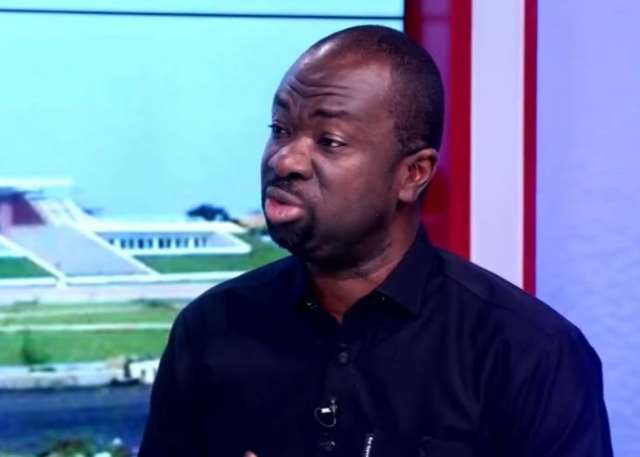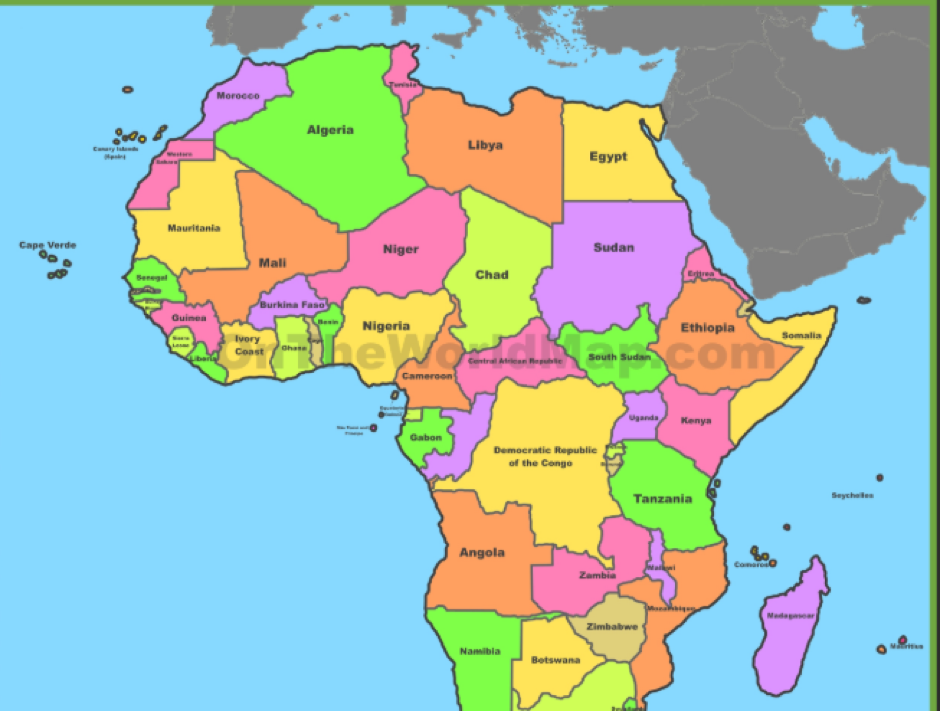By Akhileshwar Sahay,News18
Copyright news18

If the nation is to actualise the aspirational dream of “Viksit Bharat” by 2047, it will need transformative changes in many realms, none more important than rebooting and reimagining urban India on multidimensional metrics of liveability, inclusivity, sustainability, world-class infrastructure, and a robust democratic urban governance architecture built on trust and accountability to citizens.
The Salience
Making the above happen assumes much greater salience owing to three primary reasons:
Engines of Growth, Innovation and Excellence: Cities and towns have already emerged as pre-eminent centres of pump-priming growth, innovation, and excellence, and their contribution to the nation’s economy is rising rapidly by the day. Urban India is set to contribute more than 70 per cent of the country’s GDP by 2030 and over 80 per cent by 2047.
Facing Existential Crisis: Despite the recent years’ efforts of governments at both central and state levels, cities and towns are not in the pink of health to play the roles expected of them. So severe are the maladies afflicting urban India that it suffices to say they are in an existential crisis, disrupted and gridlocked in trying to cater to the needs of the current population.
No Time to be Future Ready: UN Population Prospects estimates urban India’s population to be 877 million by 2047—50 per cent of the total population. With few greenfield cities on the horizon—Dholera in Gujarat being the sole exception—much of the heavy lifting will have to be done by existing cities, with the responsibility of Tier 2 and Tier 3 cities growing manifold.
Road Untravelled
The road ahead is untravelled and full not only of plentiful thorns but also of impenetrable mountains and unbridgeable valleys. To traverse it will require embarking immediately on a nationwide “Viksit Bharat Festival” for at least the next 25 years, 365 days a year, not only 24×7 but every nanosecond—and even then, it will remain only a work in progress.
It will require resolute national conviction, complete ownership at the apex level of governance—central, state, and city—an unprecedented level of policy transformation, programme and project conceptualisation, within-cost and ahead-of-time completion, and laser-focussed attention at the level of every stakeholder.
Bharat will have to rewrite the history of the way India has developed in past decades. Bharat—it is time for action. The clock started ticking yesterday. And there is no template from the past to guide us.
But how do we get there?
The Initiative
In an endeavour to aid in making “the impossible become possible,” News18, as a responsible member of the Fourth Estate, is embarking on the difficult journey of a weekly series on both sectoral and city-specific challenges and actionable pathways to achieve the unachievable.
When the task is so onerous, I must begin with Nepathya—the curtain raiser.
The Curtain Raiser
The subject that automatically selects itself as the “Curtain Raiser” is the urgent need to reboot and recreate a robust “urban governance architecture” in the country that can rise to the level of the task ahead.
But why recreate? The one-line answer is: it has comprehensively broken down and is beyond repair or refixing. And if we cannot have a robust, people-driven urban governance architecture, it is futile even to dream of making “Bharat Viksit.”
Broken Down Rule of Law
I must begin with the judgement passed on 10 May 2022 by the Supreme Court of India bench led by Justice A.M. Khanwilkar. Noting that years of delay in conducting elections for local bodies “borders on the breakdown of the rule of law,” their Lordships passed the following judgement: “State Election Commissions across the country cannot skip their constitutional obligation to conduct polls to local bodies every five years.”
The Supreme Court further held: “Ongoing activity of delimitation or formation of wards cannot be a legitimate ground to be set forth by any authority, much less the State Election Commission, to not discharge its constitutional obligation in notifying the election programme at the opportune time and to ensure that the elected body is installed before the expiry of the five-year term of the outgoing elected body.”
This judgement, applicable nationwide, followed the court’s finding that, besides a staggering 23,000 rural local bodies, polls had not been held in 321 urban local bodies in Madhya Pradesh for more than two years since 2019–2020.
I will soon return to the prevailing situation. Suffice to say for now that the Supreme Court is being disregarded by all state governments, plunging the nation into the throes of complete constitutional breakdown with no solution in sight.
Why Local Self-Governance?
As per the United Nations Population Prospects, with 1.46 billion people in 2025, India has dethroned China as the most populous country in the world. And with China’s population shrinking while that of Bharat is likely to continue to grow for years, the “Chindia” gap will only widen.
Also, as per the latest Worldometer dataset, in 2025, out of the total estimated 1.46 billion population, the urban population will be around 535 million (36.6 per cent of the total), and the rural population approximately 920 million (63.4 per cent of the total). These figures indicate a continued shift from rural to urban areas, with urban populations growing while rural populations show a slight decline.
Rural and urban India of this magnitude cannot be managed through remote control from state capitals, which states across the board have conspired to do despite constitutional provisions to the contrary.
Taking just cities and towns, the urban population of Bharat today is 1.55 times that of the total population of the United States of America—and the gap is growing fast.
Glimpse of Just One of the Many Challenges
A recent World Bank report titled “Gearing up for India’s Rapid Urban Transformation (2024)” suggests that nearly 70 per cent of the urban infrastructure required for 2047 is yet to be built, and it will need sizeable investment.
The report estimates that within a decade from now, by 2036, India will need to invest $840 billion in infrastructure—an average of $55 billion or 1.2 per cent of GDP per annum. However, estimates suggest that between 2011 and 2018, the country’s total capital expenditure on urban infrastructure averaged only 0.6 per cent of GDP, half the required quantum of investment.
Future Ready
To make the above audacious dream a reality, Bharat must tick many boxes quickly, but none more important than having a robust, accountable-to-people urban governance architecture.
The Architecture
Local self-governance is rooted in the governance structures of ancient India. Fast forward to modern times, in British India, Lord Ripon earned the moniker “Father of Local Self-Government in India.” He received this title for his significant municipal reforms, especially his 1882 Local Self-Government Resolution, which promoted democratic forms of municipal governance and decentralised power to local bodies.
That being the case, one would have expected a smooth transition in independent India. However, the local urban governance structure crumbled quickly, leading to the Constitution (Seventy-Fourth Amendment) Act, 1992, which—while giving constitutional status to urban local bodies as the third level of governance—added a new part to the Constitution and mandated a three-tier ULB architecture:
Nagar Panchayats for areas in transition from rural to urban.
Municipal Councils for smaller urban areas.
Municipal Corporations for larger urban areas.
The 74th Amendment provided a fixed tenure of five years for Municipalities and re-election within six months of the end of tenure. If a Municipality was dissolved before the expiry of its duration, elections were to be held within six months of its dissolution.
But why were the 73rd and 74th Constitutional Amendment Acts of 1992 needed in the very first place? The answer lies in the statement of objects and reasons.
The statement of objects and reasons of the Seventy-Fourth Amendment to the Constitution acknowledged upfront that it was needed because, in many states, ULBs had become weak and ineffective owing to varied reasons—including the failure to hold regular elections, prolonged suppression, and inadequate devolution of powers and resources—preventing ULBs from performing effectively as vibrant democratic units of self-government.
The Provision
To eliminate these inadequacies and to put the relationship between the State and ULBs on a firmer footing, the 74th Amendment incorporated provisions relating to urban local bodies in the Constitution to ensure:
Functions and taxation powers.
Arrangements for revenue sharing.
Regular conduct of elections, including in cases of suppression.
Adequate representation for weaker sections.
Empowerment—Functional and Financial
Among other things, the Amendment mandated the devolution by State Legislatures of powers and responsibilities upon Municipalities with respect to preparing plans for economic development and social justice, and for implementing development schemes as may be required to enable them to function as institutions of self-government.
It also provided for a Finance Commission to review the finances of the Municipalities and to recommend principles for:
Determining the taxes which may be assigned to Municipalities.
Sharing of taxes between the State and Municipalities.
Grants-in-aid to Municipalities from the Consolidated Fund of the State.
The responsibilities enjoined on ULBs are arduous to perform, and the task becomes even more onerous if properly elected municipal bodies do not exist, or if they lack adequate resources and financial devolution.
But what is the current situation of municipal bodies in the very first place? I take just one test case—their constitution and election.
Maharashtra: A Failed State
I have earlier explained the situation prevailing in Madhya Pradesh. I posited that MP is one of the original BIMARU states. But here is the case of Maharashtra—one of the front-line, forward-looking states of the country.
On Thursday, 16 September 2025, the Supreme Court of India bench of Justices Surya Kant and Joymalya Bagchi came down heavily on the Maharashtra State Election Commission (SEC) for failing to comply with its earlier 4 May directive to hold elections in all Maharashtra local bodies within four months.
The apex court has now extended the compliance date by four more months, to 31 January 2026, with the proviso that no further extension shall be granted. The bench also directed the SEC to complete the delimitation exercise by 21 October 2025, observing that such an exercise shall not be grounds to defer the elections further.
Had Maharashtra complied with the Supreme Court judgement, this situation would not have emerged in the first place.
Consequential Collateral Damage
Due to the inability of the state to hold elections, local self-governance in Maharashtra—both urban and rural—has been derailed. While elections must be completed within six months, they have been pending for three years. The position is as follows:
Municipal Corporations: elections pending in all 29. Terms of five corporations ended in 2020, eighteen others in 2022, and the rest in 2023.
Municipal Councils: elections pending in all 290 councils.
District Councils: elections pending in all 32.
Panchayat Samitis: elections pending in all 335.
The breakdown of the constitutional electoral process in Maharashtra has made a complete mockery of the local self-governance architecture and of consecutive directives and judgements of the Supreme Court of India, the apex body whose role is to uphold the Constitution.
It is as bad as it can get.
Mumbai: A Case Study
The British recognised the need for robust urban governance in Presidency Towns early, and set up Municipal Corporations in Madras (1688) and in Mumbai and Calcutta (1726), providing for one Mayor and nine council members in these cities. These were nominated officials of the East India Company. Lord Ripon, widely regarded as the Father of Local Self-Government in India, ushered in the era of decentralisation and urban local governance through his 1882 Resolution, which promoted elected municipal representatives.
What a monumental decay Mumbai’s local self-governance has seen in independent Bharat. Since the term of its 227 corporators ended in March 2022, there has been no election. The delay—37 months and counting—is the longest Mumbai has seen. The last time the Brihanmumbai Municipal Corporation (BMC) was without elected representatives was for 15 months in 1984–85.
BMC is without an elected body despite the city alone accounting for 4.98 per cent of the country’s GDP, and along with its metropolitan region, for 35 per cent of Maharashtra’s GDP. Instructively, the BMC—India’s richest city government—has been without elected representatives ever since the five-year term of its corporators ended in March 2022.
Why Does It Matter?
BMC in FY2025–26 has an annual budget of Rs 74,427 crore. In sheer size, it is one and a half times the annual budget of Himachal Pradesh, and almost equal to the combined annual budgets of six North-Eastern states (excluding Assam).
In the absence of an elected city government, under “administrative rule” all powers to defray this expenditure are concentrated in the hands of the municipal commissioner, who exists at the mercy of the state government and is prone to manipulation.
Whither India’s Silicon Valley?
What about other key cities? Consider Bengaluru, the Silicon Valley of India. The last election for the 198-ward Bruhat Bengaluru Mahanagara Palike (BBMP) was held in August 2015. The term of the corporation ended in September 2020 and, since then, it has been rudderless, with elections repeatedly postponed.
While elections in Mumbai have been delayed in the name of reservations, the abnormal delay in Bengaluru has been attributed to the state government’s decision to break up BBMP into five parts. After five years of confusion, the state government in early August 2025 issued a draft notification for the formation of five municipal corporations under the proposed Greater Bengaluru Authority (GBA). According to the draft, BBMP will be reorganised into five corporations—Central, East, North, South, and West—each covering a group of Assembly constituencies and their wards, with some partial exclusions.
Despite a case pending in the Supreme Court, elections in Bengaluru are expected only in the second half of 2026.
Malady Runs Deeper
One might expect that Maharashtra as a failed state, and Karnataka as a ‘gone’ state, are outliers—exceptions to the rule. In fact, the malady runs deeper. Every state of India is in the same boat.
A 2023 report from the Comptroller and Auditor General (CAG) of India found that elections to Urban Local Bodies (ULBs) were delayed or not held in over 1,500 municipalities across 17 states. Key observations of the report included:
Constitutional Violation: delays beyond six months violated the 74th Constitutional Amendment Act.
Delimitation Issues: many states had not entrusted delimitation to the State Election Commissions, aggravating delays further.
Lack of Elected Representation: large numbers of ULBs functioning without elected representatives negated the very idea of grassroots democracy.
Adverse Impact on Urban Governance: the absence of elected ULBs meant governance by government-appointed officials with no democratic accountability.
In such a chaotic situation, it is impossible for ULBs even to discharge a few out of mandated core responsibilities enjoined on them by the Twelfth Schedule of the Constitution.
The prevailing situation runs counter to the principles enshrined in the 74th Amendment, which created the formal third tier of governance to meet growing aspirations and perform critical functions mandated under the Constitution. And such situations prevail despite repeated judgements of the Supreme Court of India.
From Darkness To Light
If Urban India must contribute 80–85 per cent of Bharat’s GDP, drastic urban governance reforms must be completed within 365 days from today, beginning with two urgent steps:
Parliament must replace the 74th Amendment with a future-ready new Amendment: the 74th, though passed in 1992, was rooted in the pre-liberalisation licence–permit raj, and was a compromise document that gave too much discretionary power to state legislatures in the name of national consensus.
The Supreme Court of India must suo motu issue a Writ of Mandamus directing all state governments to disband city-centric state parastatals. With vested interests running deep, if state governments fail to comply, the apex court must scrap parastatals and merge them with ULBs. This would protect national interest and would not be judicial overreach.
Prime Minister Narendra Modi has the requisite political will to make a future-ready constitutional amendment happen. The Supreme Court, as chief arbiter of the Constitution, has the authority to disband city-centric parastatals. And the actualisation of “Viksit Bharat” by 2047 is the rashtra dharma of 1.46 billion Bharatiyas. Period.
The author is a multidisciplinary thought leader with Action Bias, India-based international impact consultant, and keen watcher of changing national and international scenarios. He works as president, advisory services of consulting company BARSYL. Views expressed in the above piece are personal and solely those of the author. They do not necessarily reflect News18’s views.



